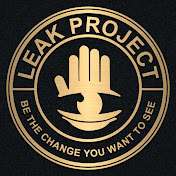
Is Facebook’s AI Feeding on Your Data?
By Tommy Truthful
September 8th, 2024
There’s a hot topic in the news lately – Facebook’s use of your personal data to train its AI. It’s a controversial subject, and if you’ve been following my blogs, you’d know I’ve covered it extensively. Just a quick reminder: Facebook, or as some of us know it, DARPA’s LifeLog, isn’t the innocent social media platform it presents itself to be. Dive deeper into my previous write-up on this: Is Facebook Really DARPA’s LifeLog?.
For those unfamiliar, you can catch up on yesterday’s trending story here: Wired’s coverage on Facebook’s AI data training.
Earlier in 2024, Mark Zuckerberg made waves with his announcement to integrate AI features across Meta’s platforms, including Facebook, Instagram, and WhatsApp. The tech giant’s stride into the realm of AI is undeniable, but it raises a plethora of legal and ethical questions.
Meta introduced a new form within their help centers titled “Generative AI Data Subject Rights at Facebook.” The intent? To allow users to inquire about the third-party data used for AI development and request for its deletion. But don’t be too hasty to think this is a win for privacy. It’s not a guarantee that your request will be honored. And here’s the catch – this doesn’t relate to the personal data Meta has already harvested from its platforms. We’re talking about external data, perhaps collected from the far reaches of the internet or third-party data brokers.
Anyone can fill out this form, and it only asks for your country of residence, name, and email. But, don’t be too surprised if the process seems glitchy, especially on mobile. From my personal experience, it took Meta over a day just to acknowledge my request. And for my US-based readers, the effectiveness of this ‘opt-out’ is still in murky waters. Meta’s opaque responses and scarce specifics on their data processing methods further fuel the uncertainty.
On an intriguing side note, last night I delved into an exclusive discussion on the ‘Burning Man’ and its eerie resemblance to a nuclear event and potential power grid failure. Curious about the revelations me and Doenut Factory unraveled? Stay tuned for an upcoming members-only video. Dive into these exclusive insights for just $11/month – that’s less than what you’d spend on a meal at Wendy’s. Join the Truth Mafia family and keep yourself informed!




